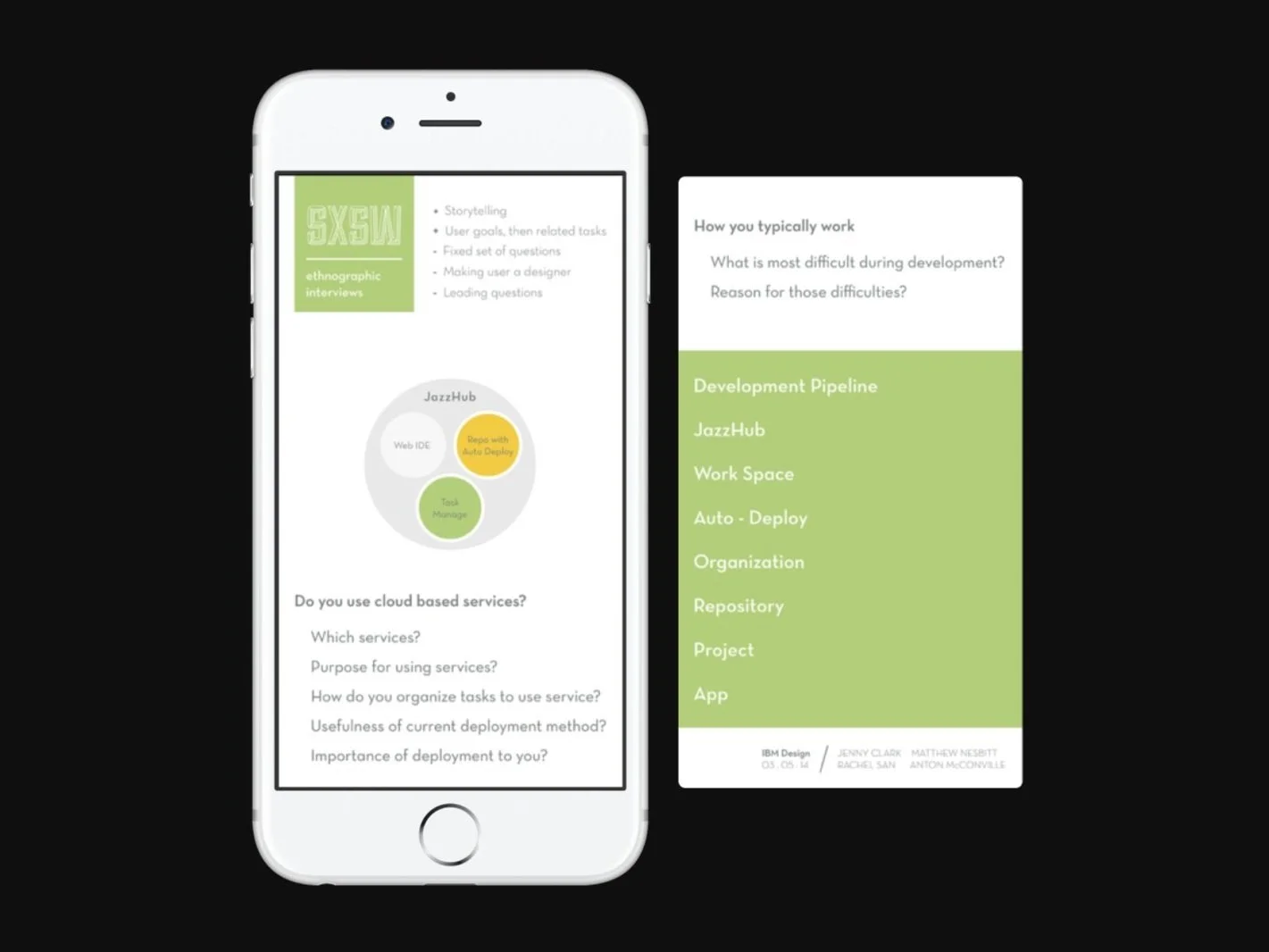Continuous Delivery Pipeline
After conducting research with developers about how they work, we found that the most nerve-wracking part of their job is delivering code. What followed was a DevOps continuous delivery solution that is equal parts modular and automated. This product went on to become one of the most important solutions IBM offered to developers.
Continuous delivery pipeline is a DevOps tool for that is focused on adding a higher level of quality to the code developers deliver. This is achieved by adding multiple steps to the process of delivery before code is surfaced to the consumer.
Client
IBM
Role
UX Designer
Design Researcher
RESEARCH PHASE 01Understanding the user: Enterprise developers
Contextual Inquiry, 10 developers
Our research revealed that development can be an extremely stressful process, with multiple responsibilities that come with the job title. They run teams, manage code, and worry about efficiency. What's more is that, depending on the company, they often wear multiple hats. For example, a start-up CEO may also be one of the only front-end developers.
Synthesis & concepting
01Google docs style IDE
Pair programming, collaboration across time-zones, the ability to confidently code in the cloud (no internet connection required), and have visibility into who wrote what line of code was important to every developer we talked to.
02Tags based task management
Team task management that's structure would operate based off a set of tags that were meaningful to that development team.
03Continuous deployment pipeline
Give developers access to all of the information they need to fix errors that occur with coding. Is a server down? Did you break the build? Visualizations would be the solution in assisting the developer in fixing the problem.
RESEARCH PHASE 02Understanding the market: Startup & garage developers
Guerrilla research at SXSW Interactive, 20 developers
We conducted Guerrilla Research in order to test our hypothesis and product model with real developers. In order to ensure a consistent line of inquiry across all of the designers on my team I created a mobile optimized research guide. It provided the basic "do's and don'ts" of ethnographic research, our priority products, questions, and keywords. This enabled the interviewer to pivot between recording, note taking, and referencing talking points if taking an interview alone.
Opportunity
Start-ups want the ability to change products at any given moment. Given that fact, lightweight and easily integratabtle products are core to what they need in a product. Our findings also showed transparency and support mission critical.
Further concepting
We continued concepting around the principles “lightweight” and “modular,” with the benefit to the business and user being that teams could use different combinations of our products depending on their needs.
End-to-end wireframe flow
































Translating insights from research
We focused on designing thoughtful interactions, like how a user might alleviate a broken build or failed deployment and revert to a previous one. We identified where the most acute pain-points occur, and created an experience that made room for developers to be in control of their code.
Launched continuous delivery pipeline
“In her capacity as lead UX designer, Jen was responsible not only for the design of JazzHub but the research and much of the business decisions that evolved from it. When the decision was made to fuse JazzHub into Bluemix, Jen developed the most important capability — the pipeline — which even today, continues to be the key differentiator for IBM’s offering to developers in the marketplace. Jen’s research insights led to the strategy development of IBM’s DevOps Services.”












